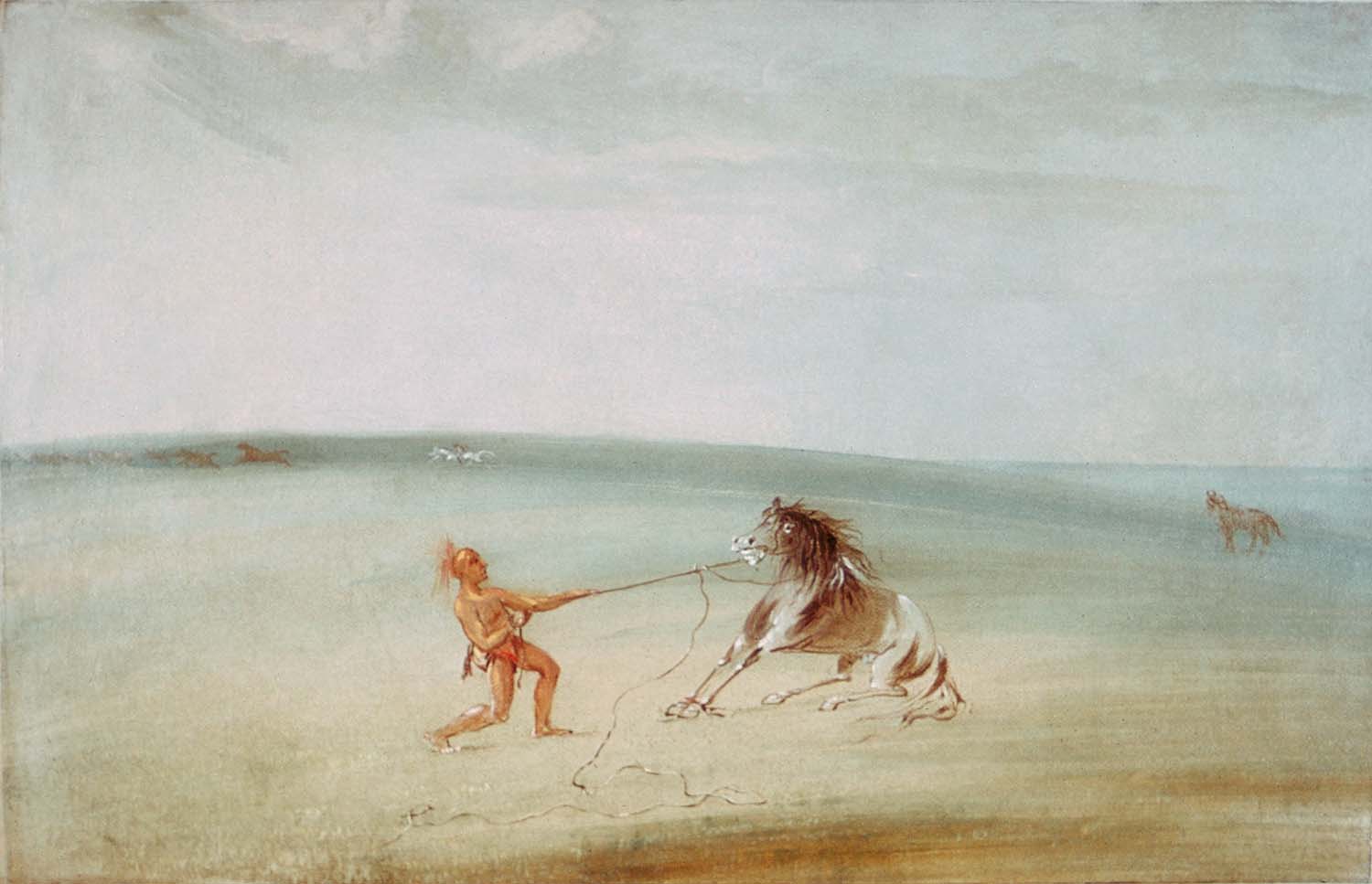Breaking Down the Wild Horse

When the lasso falls over the neck of a wild horse, George Catlin wrote, the Indian “instantly dismounts, leaving his own horse, and runs as fast as he can, letting the laso pass out gradually and carefully through his hands, until the horse falls for want of breath, and lies helpless on the ground; at which time the Indian advances slowly towards the horse's head, keeping his laso tight upon its neck, until he fastens a pair of hobbles on the animal's two forefeet, and also loosens the laso (giving the horse chance to breathe), and gives it a noose around the under jaw, by which he gets great power over the affrighted animal, which is rearing and plunging when it gets breath; and by which, as he advances, hand over hand, towards the horse's nose, he is able to hold it down and prevent it from throwing itself over on its back, at the hazard of its limbs. By this means he gradually advances, until he is able to place his hand on the animal's nose, and over its eyes; and at length to breathe in its nostrils, when it soon becomes docile and conquered; so that he has little else to do than to remove the hobbles from its feet, and lead or ride it into camp.” Catlin sketched this scene on a dragoon expedition in 1834, and probably completed the painting in his studio between 1835 and 1837. (Catlin, Letters and Notes, vol. 2, no. 41, 1841, reprint 1973; Truettner, The Natural Man Observed, 1979
- 624
- Other objects by this creator in this institution
- 312
- Objects by this creator in other institutions